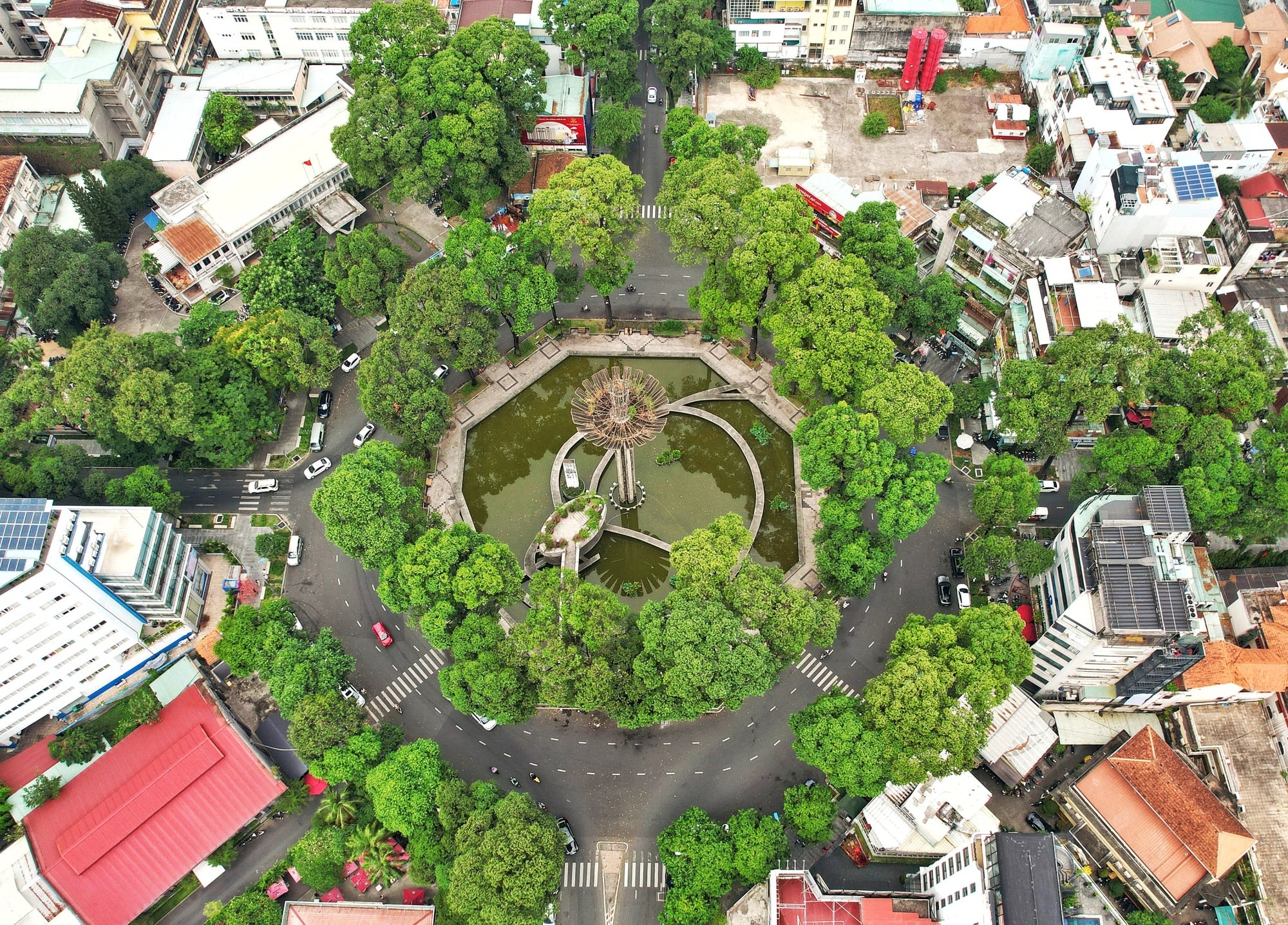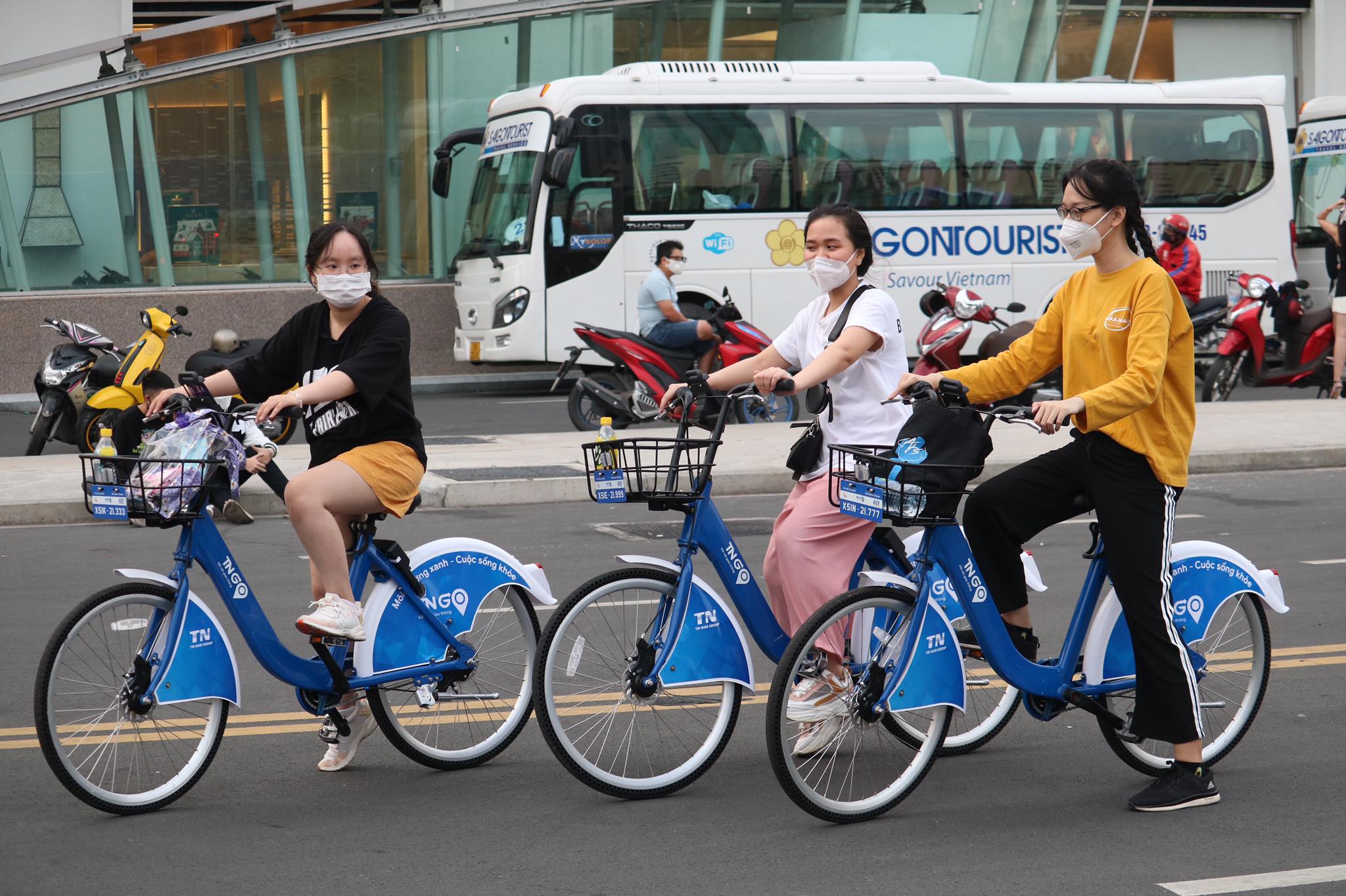Editor's note: This story is written by Australian Ray Kuschert following a request of Tuoi Tre News for advice on making Ho Chi Minh City a greener place. Kuschert has been living in the southern Vietnamese metropolis for over ten years and is a cycling enthusiast.
The piece is titled and edited by Tuoi Tre News for clarity, consistency, and coherence.
Building a 'green city' does not have an overnight solution. The top green cities in the world have been making changes for 50 years or more and now it is Ho Chi Minh City that has the opportunity to take a leap forward in 'going green' to improve the air, water, and livability for generations to come.
My Green City is one that all people play a part in improving every day. There are some obvious ways in which this can happen from the choices you make in purchases to the choice of design of your business or home. They all play a part.
For example, if everyone drove their motorbike or car 1km less every week, and with nine million private vehicles in Ho Chi Minh City, we would save nine million kilometers weekly. Assuming the average fuel consumption of 20km per liter, and knowing that burning one liter of gasoline produces approximately 2.3 kg of carbon dioxide, if everyone reduces their driving by one kilometer per week, it could result in a substantial reduction of carbon dioxide emissions for the city.
But how can this happen? In my opinion, we have the ability to join the world's leading cities to go back to bicycles as a key mode of transport.
Indeed, Ho Chi Minh City has the perfect structure for bicycles since it is flat and compact. But the current habit of using cars and motorbikes makes it impractical and impossible to replace motorized transport with bicycles.
Around 15 years ago in Sydney, Australia, the city's leader implemented special bicycle lanes throughout the city. This decision sparked significant anger among drivers, who claimed it was a waste of money and space and would worsen traffic. The painted and partitioned lanes were exclusively for bicycles and police motorcycles.
However, 15 years later, these bicycle lanes have become a popular form of transport for office workers, retail workers, and students across the city. Over time, more and more people started using the bicycle lanes, leading to a decrease in car usage for commuting. This example illustrates how creating infrastructure can generate demand, with the availability of bicycle lanes encouraging more people to switch to cycling.
In addition, buses and trains were fitted with special devices to carry bicycles. This created an opportunity where people could ride a short distance to a public transport hub, take the long journey on a bus or train, then ride the shorter distance to their school or office.
And today the pollution in Sydney, Australia is lower than ever. The future green Ho Chi Minh City could use similar infrastructure solutions and become a leading green space in Southeast Asia.
Of course it will cause pain for motorized transport drivers in the short term but it will also promote people to change the way they get to work. I have a bicycle and I would ride to work tomorrow if there was a safe space to ride on the road in my district of Ho Chi Minh City.
Creating bicycle-only roads and pathways that link to bus and train hubs is the perfect way to reduce the use of motorbikes and cars, which will remove millions of tons of carbon emissions from the air. It also helps make bus routes more efficient as traffic reduces and more people use the services available.
For me, above my vision of a clean future, My Green City starts with not using plastic coffee cups, straws, and single-use plastics. It is buying fresh food from a market instead of packaged food. It means buying used items where possible and only purchasing new items when necessary. It means reducing food waste. But most of all it means that I take action to reduce the pollution I make in the air, water and landfill, and motivate others to join me in making a difference.
Let’s make Ho Chi Minh City the most livable city in Asia and create My Green City in everything we do.

Like us on Facebook or follow us on Twitter to get the latest news about Vietnam!


















































